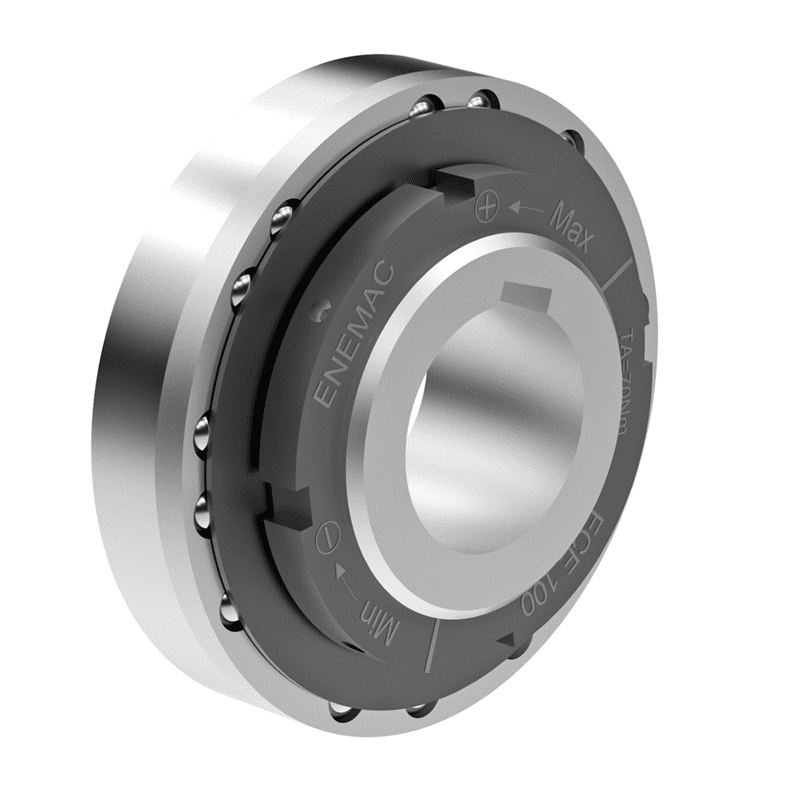Robust and perfected safety without
compromises

Mechanical Torque Limiters are used in all kinds of technical application areas. Their job is the protection of products and expensive devices.
Torque Limiters react very sensitive to the smallest increase of torque and disconnect the drive from the following masses in a split second. That’s why they are also called “Safety Couplings”.
The disconnection is forced, that means it has no effect on the function in case of an electrical power outage. A reason for a torque overload is for example the accumulation of material. That’s why torque limiters are also called overload clutches.
The special thing about Type ECE is the axial short design, which requires a very small installation space. This simple and robust functional principle has thousand fold proved itself. It has a reliable function and still needs just few parts.
High-precision torque limitation is guaranteed with the use of special disc springs, they also enable a very wide torque range without changing the disc spring.
The perfected functional principle cuts the torque between the engine and the machine within few angle degrees. The couplings have a fixed point switching. That means one switching point per turn. That is important to retain the reference point of the machine.
To stop the drive immediately in case of an overload, it is advisable to place a proximity switch to the disc spring. The disc spring moves while the torque limiter is disconnecting the drive from the machine. The signal from the proximity switch can be used for the drive control to stop the engine immediately.
Type ECE has a keyway for the torque transmission between engine and torque limiter. Chain wheels, belt pulleys etc. are mounted on the engine shaft and screwed on the flange ring of the ECE for the torque transmission. The torque limiter ECE is available in 14 sizes, and torque ranges from 2 Nm to 900 Nm are possible.




